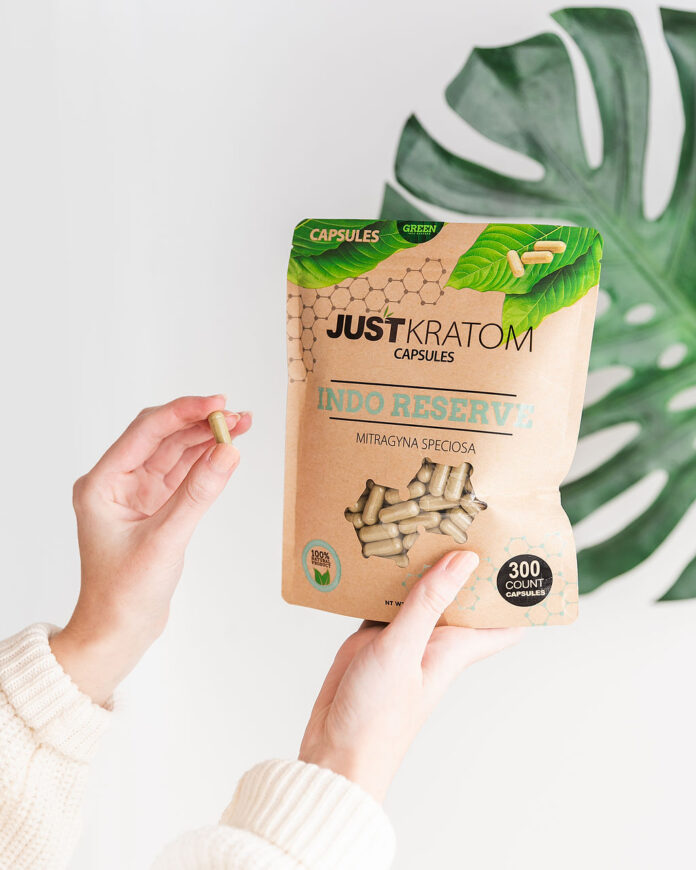Dosage
Understanding dosage is crucial when exploring kratom, a tropical plant gaining popularity for its potential benefits. Dosage can vary depending on individual factors like body weight, tolerance, and desired effects. Determining the right dosage is essential for maximizing the potential benefits of kratom while minimizing potential side effects.

Recommended Starting Dose
A common starting dose for first-time users is 2-4 grams of kratom powder or one to two capsules. This allows individuals to assess their tolerance and desired effects. It’s important to start low and gradually increase the dosage as needed, always listening to your body’s response.
Remember, there is no one-size-fits-all approach to kratom dosage. Factors such as body weight, metabolism, experience level, and intended effect all play a role in determining the optimal dose for each individual.
Factors Affecting Dosage
Understanding dosage is crucial when exploring kratom, a tropical plant gaining popularity for its potential benefits. Dosage can vary depending on individual factors like body weight, tolerance, and desired effects. Determining the right dosage is essential for maximizing the potential benefits of kratom while minimizing potential side effects.
Factors such as body weight, metabolism, experience level, and intended effect all play a role in determining the optimal dose for each individual. For example, individuals with a higher body weight may require a larger dose compared to those with a lower body weight to achieve similar effects.
It’s also important to consider the kratom strain as different strains have varying potencies and effects. Beginners should always start with a low dose and gradually increase it until they find the optimal dosage for their needs.
Determining Your Optimal Dose
Determining your optimal kratom dosage is crucial for a safe and effective experience.
Consider these factors when finding your ideal dose:
- Body Weight: Individuals with higher body weights may need larger doses to achieve the desired effects.
- Metabolism: Faster metabolism can require more frequent dosing or slightly higher doses.
- Experience Level: Beginners should start with lower doses and gradually increase as needed, while experienced users may require higher doses.
- Intended Effect: Different kratom strains have varying effects (e.g., energizing, relaxing). Adjust your dose based on the desired outcome.
Benefits
Kratom is gaining popularity due to its potential benefits, ranging from pain relief to mood elevation. These potential benefits are largely attributed to kratom’s active compounds, mitragynine and 7-hydroxymitragynine, which interact with opioid receptors in the brain.

Pain Relief
Kratom is often used for pain relief, both acute and chronic. Users report it can help manage discomfort from conditions like arthritis, muscle soreness, and headaches. The pain-relieving effects are believed to be related to kratom’s interaction with opioid receptors in the body.
It’s important to note that while kratom shows promise for pain management, more research is needed to fully understand its efficacy and safety.
Energy Boost
Kratom is known for its potential to provide an energy boost. This effect is often attributed to the stimulating properties of mitragynine, one of its primary active compounds. Users report feeling increased alertness, focus, and motivation after consuming kratom.
This energizing effect can be beneficial for individuals looking to improve their cognitive performance or overcome fatigue. However, it’s important to note that excessive consumption of kratom can lead to adverse effects, including anxiety and insomnia.
Mood Enhancement
Kratom is gaining popularity due to its potential benefits, ranging from pain relief to mood enhancement. These potential benefits are largely attributed to kratom’s active compounds, mitragynine and 7-hydroxymitragynine, which interact with opioid receptors in the brain.
Many users report that kratom can positively impact their mood. Some individuals find it helps alleviate symptoms of depression and anxiety. Kratom’s potential to elevate mood is thought to be related to its interaction with opioid receptors, which play a role in regulating feelings of pleasure and well-being.
It is important to note that while kratom shows promise for mood enhancement, more research is needed to fully understand its mechanisms and long-term effects.
Anxiety and Depression Management
Kratom, a tropical plant gaining popularity for its potential benefits, has been explored as a natural remedy for anxiety and depression. While further research is needed to fully understand its effectiveness and safety, anecdotal evidence suggests that kratom may help alleviate symptoms of these conditions.
- Mood elevation:
- Anxiety reduction:
Kratom’s potential mood-boosting effects are attributed to its interaction with opioid receptors in the brain. These receptors play a role in regulating feelings of pleasure and well-being, and kratom’s active compounds may stimulate these receptors, leading to a sense of calmness and improved mood.
Some users report that kratom can help reduce anxiety symptoms. It is believed that kratom’s interaction with opioid receptors may also contribute to this effect by modulating neurotransmitters involved in regulating anxiety, such as serotonin and dopamine.
It is important to note that kratom should not be used as a substitute for professional medical treatment for anxiety or depression. If you are experiencing symptoms of these conditions, it’s essential to consult with a healthcare professional.
Side Effects
While kratom offers potential benefits, it’s essential to be aware of possible side effects. Common side effects include nausea, itching, and dizziness. Some users may also experience constipation, loss of appetite, or increased urination. It’s important to start with a low dose and gradually increase it as needed to minimize the risk of adverse reactions.
Common Side Effects
While kratom offers potential benefits, it’s essential to be aware of possible side effects. Common side effects include nausea, itching, and dizziness. Some users may also experience constipation, loss of appetite, or increased urination. It’s important to start with a low dose and gradually increase it as needed to minimize the risk of adverse reactions.
In some cases, kratom can cause more serious side effects, such as seizures, liver damage, and addiction. If you experience any severe or persistent side effects, discontinue use and seek medical advice immediately.
Serious Side Effects
While kratom offers potential benefits, it’s essential to be aware of possible side effects. Common side effects include nausea, itching, and dizziness. Some users may also experience constipation, loss of appetite, or increased urination. It’s important to start with a low dose and gradually increase it as needed to minimize the risk of adverse reactions.
In some cases, kratom can cause more serious side effects, such as seizures, liver damage, and addiction. If you experience any severe or persistent side effects, discontinue use and seek medical advice immediately.
Precautions
While kratom offers potential benefits, it’s essential to be aware of possible side effects. Common side effects include nausea, itching, and dizziness. Some users may also experience constipation, loss of appetite, or increased urination. It’s important to start with a low dose and gradually increase it as needed to minimize the risk of adverse reactions.
In some cases, kratom can cause more serious side effects, such as seizures, liver damage, and addiction. If you experience any severe or persistent side effects, discontinue use and seek medical advice immediately.
Legality and Safety
Understanding the legal status and potential safety risks associated with kratom is crucial before exploring its use. Kratom’s legal standing varies across countries and regions, with some places completely banning it while others have implemented restrictions or regulations. It’s essential to research the specific laws in your area before considering kratom consumption.
Legal Status of Kratom
The legal status of kratom is complex and varies greatly depending on location.
In some countries, such as Thailand and Malaysia, kratom is entirely banned. Other countries have restrictions on its cultivation, sale, or possession. In the United States, kratom’s legal status is a patchwork, with certain states banning it while others allow its sale and consumption.
It’s crucial to research the specific laws in your area before using kratom to ensure you are not breaking any regulations.
Quality and Sourcing
Understanding the legal status and potential safety risks associated with kratom is crucial before exploring its use. Kratom’s legal standing varies across countries and regions, with some places completely banning it while others have implemented restrictions or regulations. It’s essential to research the specific laws in your area before considering kratom consumption.

The safety of kratom products depends on various factors, including sourcing, manufacturing practices, and individual user characteristics. Choosing high-quality kratom from reputable suppliers is essential to minimize potential risks. Look for products that are lab-tested for purity and potency, ensuring they are free from harmful contaminants.
It’s important to be aware of potential sources of contamination, such as pesticides, heavy metals, or microbial growth, which can occur if kratom is not properly cultivated and processed. Opting for organically grown kratom and sourcing it from trusted suppliers can help reduce these risks.
Safe Consumption Practices
Understanding the legal status and potential safety risks associated with kratom is crucial before exploring its use. Kratom’s legal standing varies across countries and regions, with some places completely banning it while others have implemented restrictions or regulations. It’s essential to research the specific laws in your area before considering kratom consumption.
- Be Aware of Legal Restrictions:
- Choose Reputable Suppliers:
- Be Mindful of Contaminants:
Kratom’s legal status is complex and varies greatly depending on location. In some countries, such as Thailand and Malaysia, kratom is entirely banned. Other countries have restrictions on its cultivation, sale, or possession. In the United States, kratom’s legal status is a patchwork, with certain states banning it while others allow its sale and consumption. It’s crucial to research the specific laws in your area before using kratom to ensure you are not breaking any regulations.
The safety of kratom products depends on various factors, including sourcing, manufacturing practices, and individual user characteristics. Choosing high-quality kratom from reputable suppliers is essential to minimize potential risks. Look for products that are lab-tested for purity and potency, ensuring they are free from harmful contaminants.
It’s important to be aware of potential sources of contamination, such as pesticides, heavy metals, or microbial growth, which can occur if kratom is not properly cultivated and processed. Opting for organically grown kratom and sourcing it from trusted suppliers can help reduce these risks.
Conclusion
This article explored the multifaceted world of kratom, providing insights into dosage, potential benefits, and associated risks. From its use as a natural remedy for pain and mood elevation to its legal complexities and safety considerations, the information presented aims to empower individuals with knowledge to make informed decisions about kratom consumption.
Buy Kratom capsules from Just Kratom for enhanced mood
- How Long After Getting Lip Filler Can You Get More - September 30, 2025
- Gummy Smile Treatment – Gum Contouring Near Lingfield, Surrey - September 28, 2025
- Filler For Sagging Jowls In Knaphill, Surrey - September 27, 2025
